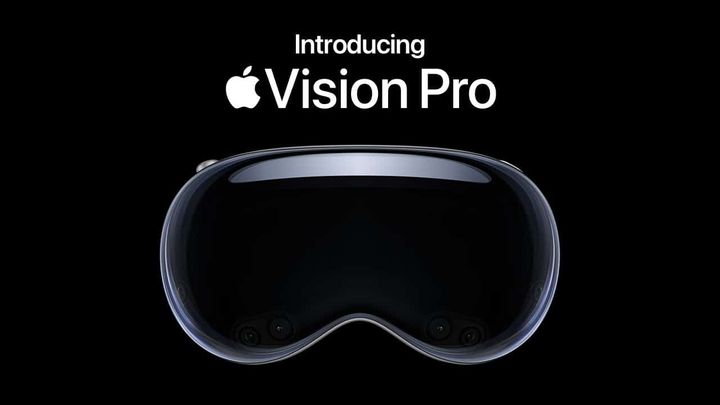6G The Sixth Generation of Mobile Networks
The sixth-generation (6G) of wireless technology is superior to the fifth-generation (5G) in speed and data capacity. 5G cellular technology has been superseded by 6G. There will be greater bandwidth and lower latency than even with 5G networks.

The sixth-generation (6G) of wireless technology is superior to the fifth-generation (5G) in speed and data capacity.
5G cellular technology has been superseded by 6G. There will be greater bandwidth and lower latency than even with 5G networks. The target latency for the Internet is one microsecond. Throughput of 1 millisecond is 1,000 times quicker.
There should be improvements in imaging, presence technology, and location awareness as a result of this technology. Artificial intelligence will be used by the 6G computational infrastructure to decide where data will be stored, analyzed, and shared.
It is not functional at this time. It's true that some businesses are already investing in 6G, but industry standards are still years away.
It has several uses and can enhance your time spent online.
6G can provide speeds up to 10 times faster than 5G.
It offers latency that is up to ten times faster than 5G. Streaming movies and downloading files will proceed considerably more quickly than they would on 5G.
Enhanced communication
6G's greater bandwidth capacity means it can more reliably and consistently deliver your internet connection. It's useful for connecting devices in urban and rural areas, as well as enclosed spaces.
As a whole, it will have a significant effect on the internet as we know it by allowing for faster, more reliable wireless connections at considerably cheaper prices.
6G networks will be available to the public soon in future.
Millimeter wave and 5G mobile cellular systems will be among the various technologies utilized. These advancements, compared to the current 4G technology, will allow rates of up to 100Gbps.
1.The Millimeter Wave band, which provides much greater data rates and better coverage than the other bands used in existing 4G and 5G networks. These faster speeds come with a price, however, as they traverse less distance and are more easily blocked.
2.The technology that operates in the 25-50 Gigabit per second (Gbps) midband. This is why midband networks are more common than millimeter wave networks and can handle more data.
- 5G mobile cellular systems will improve speed and data capacity by making use of the existing network.
With 6G still in its infancy, envisioning its final form is challenging. In contrast, wireless industry representatives and academics portray in media interviews and scholarly articles as a comprehensive, internet-based system that permits instantaneous interactions between customers, gadgets, vehicles, and the environment. 1,2
Devices like smartphones and smart home appliances are part of the IoT. Someday, it's possible, we'll have a fully functional Internet of Everything. However, that is dependent on subsequent improvements and how it performs.
Here's a rundown of what experts mean when they talk about:
speed of one Tbps
One terabit per second (Tbps) internet device speeds may be feasible in the future, according to some analysts.
That is a thousand times faster than the current top speed of most home internet networks, which is 1 Gbps. In theory, it can operate at speeds up to 10 Gbps, or 100 times faster than standard Ethernet. This is, of course, merely conjecture, and we still have a ways to go before we can achieve such velocities.
Still, most industry watchers expect 6G to prioritize extremely high data rates and reliable connections. The internet connection will be fast and reliable. settling into the routines of many people. 1
Terahertz waves
In 2019, the FCC authorized commercial testing of "terahertz waves" and "submillimeter waves," paving the way for a possible 6G future. Between 95 GHz and 3 THz, these are the radio frequency ranges that exist (terahertz).
Terahertz waves have a higher frequency than millimeter waves, which are currently being heralded as a type of Holy Grail solution to network congestion and bandwidth limits. Millimeter wave bands are used by cutting-edge 5G technologies to transport large amounts of data at lightening speeds, paving the way for the creation of autonomous vehicles and telemedicine.
Millimeter waves have the problem of only working at close range and requiring "line of sight" between the transmitter and the receiver. Additionally, the frequency spectrum of terahertz waves is substantially narrower. But if it can make good use of some cutting-edge networking tactics, it might free up even more capacity for performing complicated, Jetsons-like tasks across a 6G wireless network.
Using state-of-the-art technologies, intelligent automation
Artificial intelligence (AI) applications like autonomous vehicles, drones, and factory-floor management systems have gained a lot of traction since the rollout of 5G. With the advent of 6G, it is predicted to become much more widespread, and some experts feel that AI will be necessary to keep everything organized and running well.
Collaborative AI could let self-driving cars coordinate with one another, avoid obstacles like pedestrians and other vehicles, and determine the most efficient routes to take.
It's a part of the growing "edge computing" trend, which moves network management away from cloud servers and into edge devices, boosting speed and decreasing latency.
Technologies that work together
The use of virtual reality is one of 5G's most anticipated features. This is, however, just the beginning. Even more immersive technologies, such as cellular surfaces, networked implants, and "wireless brain-computer interfaces" (!!! ), are expected to emerge in the future, according to some observers.
The author of a white paper published in July 2019 said that "smart wearables, headphones, and implants that can accept direct sensory inputs from human senses" may one day replace cellphones.
Improvements made possible by 6G technology
Supports Increasing the number of supported mobile connections. Superior Information Transfer Rates
Increase Healthcare Efficiency with Frequencies That Are Separate From Each Other
Photo by Shubham Dhage / Unsplash
Technology's Large-Scale 6G Coverage Drawbacks:
Listed below are six ways in which 6G Technology improves our lives.
A speed of 1 TB/s is theoretically possible with 6G technology. 5G wireless networking, cognition, sensing, and imaging applications will be made possible by the increase in capacity and decrease in latency. The use of 6G technology has many advantages.
Boost Mobile Network Connections
High-rate data transmission support
Transform medical care 3
- Repetition Rates
5 Technology offers a wide range of applications.
The spectrum of possibilities for 6g technology is vast. This means a reduction in the number of towers required for a given area. It works well in wet climates or places with lots of vegetation.
Consequences of 6G
The problems with 6th generation technology are few. Due to the novelty of the technology, it would be premature to list any drawbacks until it has been used in a practical setting.
(1) Inapplicable
Costly
Privacy
- Issues with technological compatibility
Positive Health Effects
Possibilities and Dangers
The new and exciting development of the 6G Network technology will help both private companies and government agencies. The ability to send and receive messages at breakneck speeds helps alleviate issues with connectivity in more remote areas. Adding further research would shed light on the benefits and drawbacks.
Citation
https://informationtechnologypros.com/category/information-tech/page/2/



